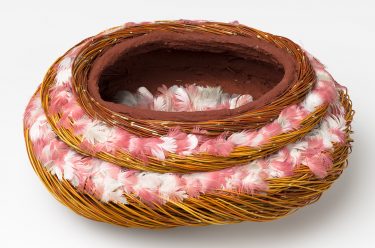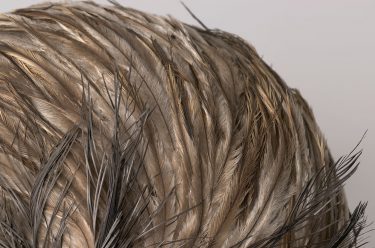Shirley Macnamara is a fibre artist with a significant career dating from the mid 1990s. Her work Wingreeguu 2012 is a woven sculptural installation based on traditional Indjilandji/Dhidhanu Alyawarre spinifex shelters. Macnamara spoke to Diane Moon about her work.
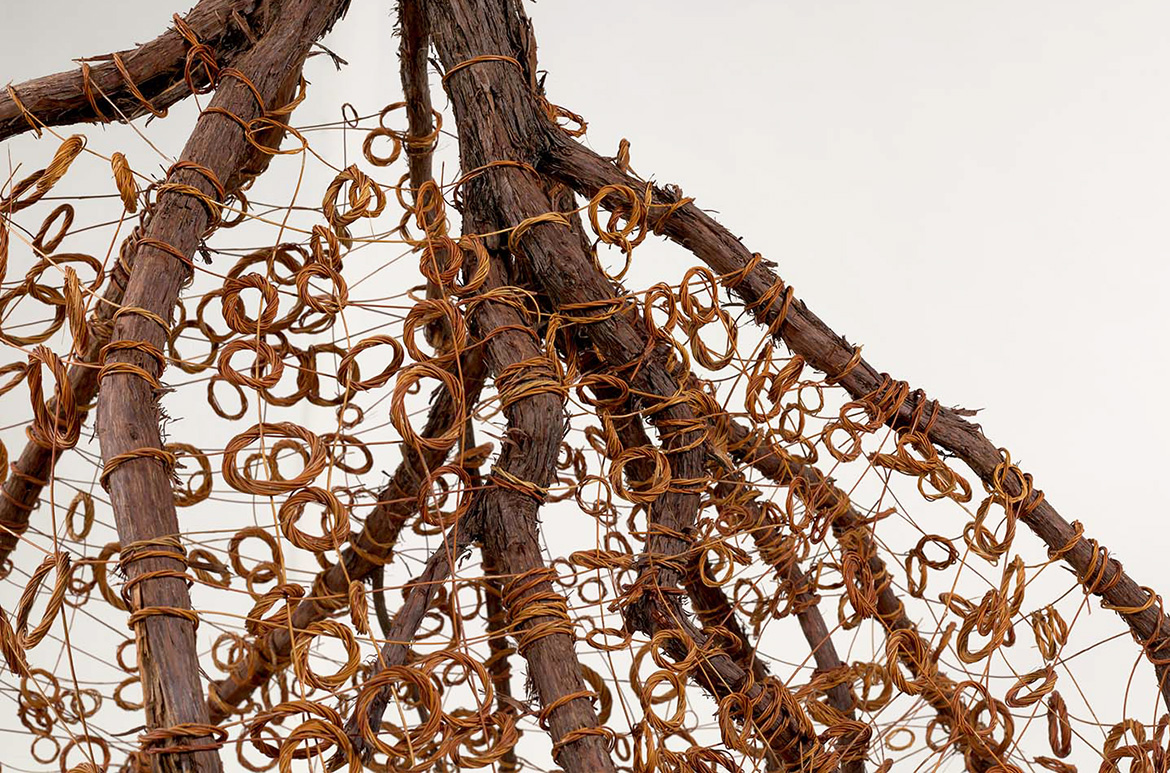
Shirley Macnamara | I live on a cattle station which I run with my son and he and his family live there as well. A lot of time’s taken up working, but I make time for my art work.
I was born in Mt Isa but my traditional country is Indjilandji/Dhidhanu, which is in the Camooweal region in far western Queensland, 13 kilometres east of the Northern Territory border. My father is an Alyawarre man and we’ve had a wonderful connection to his people at Lake Nash, across the Northern Territory border. So, I’m a bush person and I’m very proud of that.
I used to paint. I started off painting, though I have never had any real art training. There was a lady that painted, and I went to a few classes, but I work in isolation basically.
I started looking for something to use from the land itself; I needed to use a natural fibre. There was no one in my family working in any of those materials and so I did search for quite a number of years and discovered that spinifex is very resilient. It lives and survives in a very harsh environment and you can’t kill it.
So I discovered the spinifex and thought, ‘Well, this is what I’m going to use’ and spent a couple of years experimenting with it to see whether it was going to last and it has done. And I have. My work changed from two-dimensional to three-dimensional and initially, when I started out working in spinifex, I felt there were probably some things made from spinifex that were used traditionally but I hadn’t seen them, and so I chose to construct things of my own shape and size. I did not want to do anything that was or had been made before. I wanted to work entirely in a contemporary style. I called my first set of vessels Guutu, because that means a container, or vessel, in my traditional language. But in this contemporary style none of my works are meant to be functional. They’re basically representative of the very harsh, dark, dry region that I live and work in.
RELATED: Shirley Macnamara
SIGN UP NOW: Subscribe to QAGOMA Blog for the latest announcements, acquisition highlights, behind-the-scenes features, and artist stories.


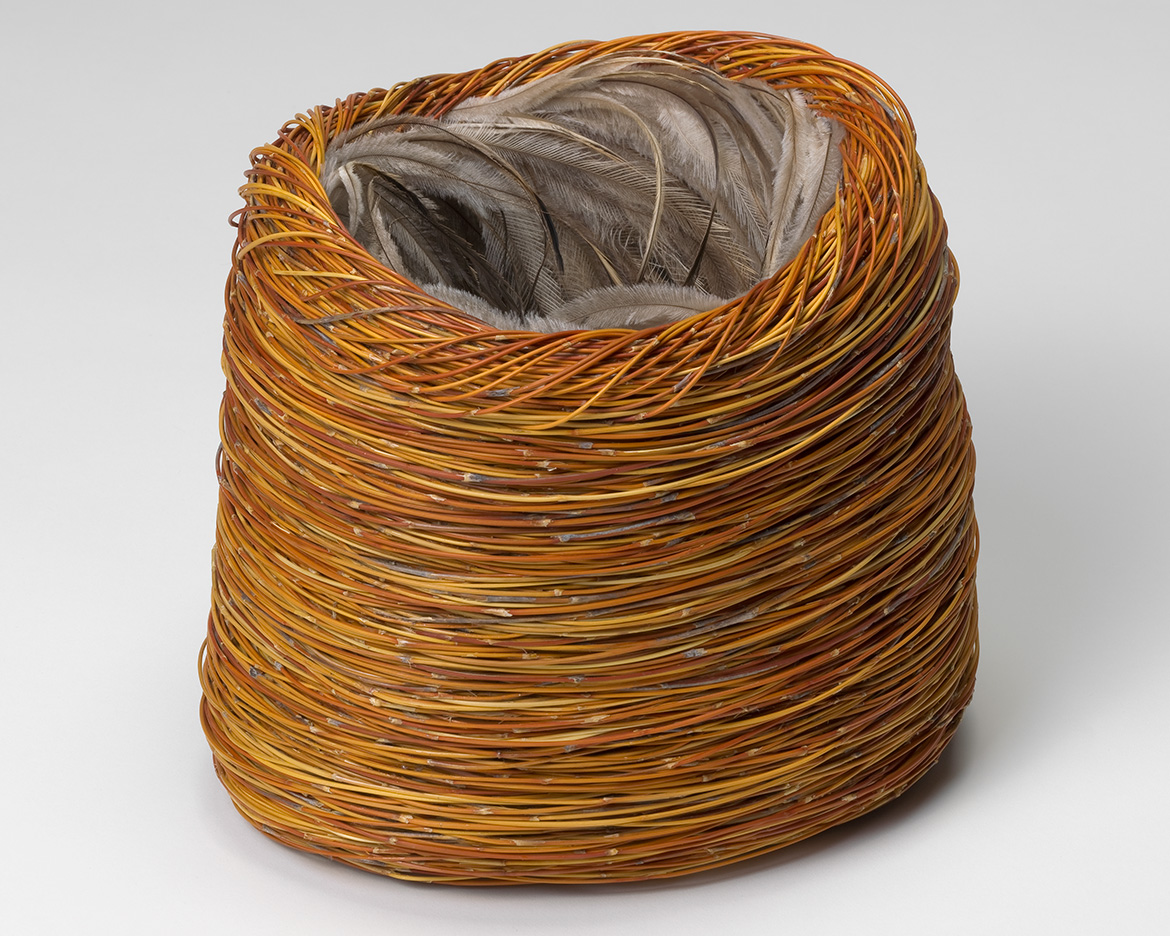
Diane Moon | Could you tell me about the colour of spinifex and how seasonal changes affect it?
Shirley Macnamara | Well, spinifex in our country has always been considered as quite a rubbish material by the grazing industry, because the grass will grow in between the spinifex. Though, when there’s nothing else for them to eat, the cattle can actually survive on it. So we muster and do our cattle work in the cooler months of the year. We were mustering and I was racing around chasing cattle on a horse and spotted this spinifex that had been turned over by a grader and here were all these beautiful colours. I’d been searching for the right material and thought that I might use spinifex, and then I saw this beautiful colour underneath.
There are actually three layers of colour on each strand. I pick each strand individually and clean the outer layer off and there’s this beautiful colour underneath it. Quite often I’ve had people ask me if I colour the strands in some way. The colours vary; the variations are seasonal, I’ve found. In winter time they are a beautiful golden yellow. The colours are softer at first and then they gradually darken, sometimes into an orangey colour and even into a darker red. I think the heat may have something to do with that as well. But I didn’t even know that before I started using the grass (spinifex). I use the little individual runners that connect the spinifex clumps, which are quite strong, and I see them as representing how we manage and survive in the environment.
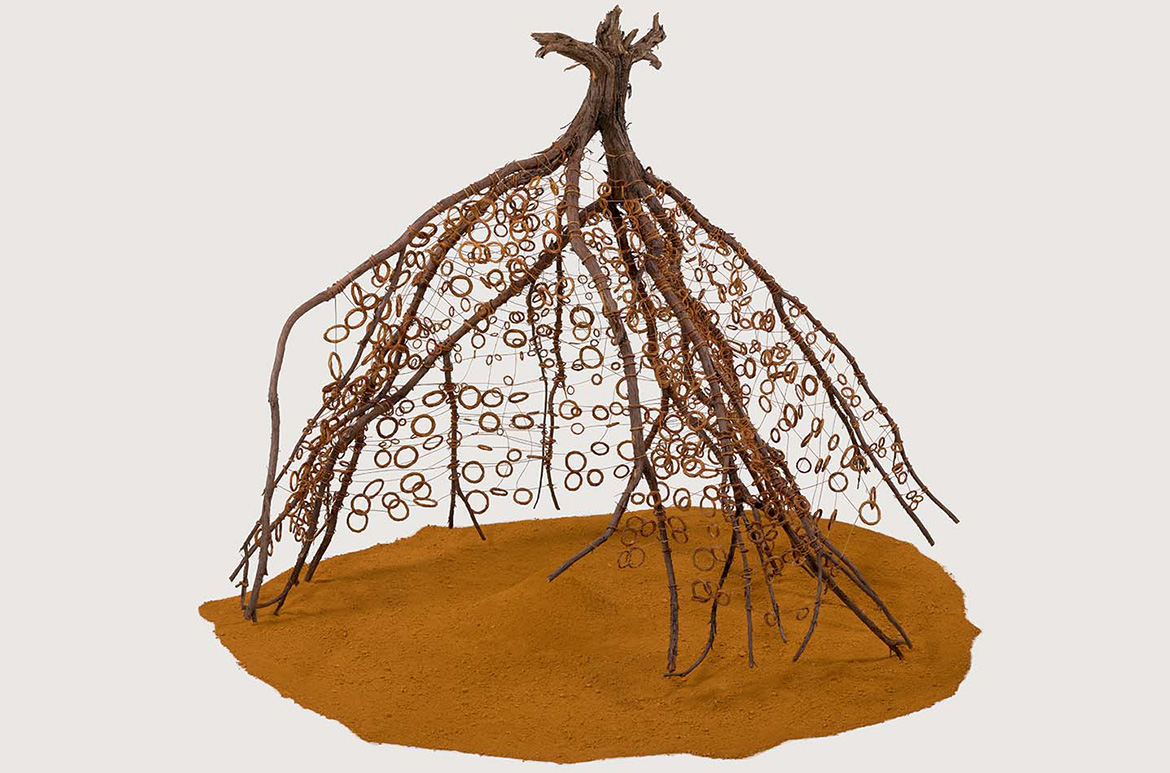
Diane Moon | Wingreeguu is quite a departure from your earlier vessels. Could you tell us how it evolved?
Shirley Macnamara | Well the turpentine bush is another one of those things that grow out there. They grow very, very thickly and make it difficult to chase cattle as they can hide under it when you’re on a horse galloping through the turpentine. I’ve quite often seen them tipped over as this one was and for the last couple of years I’ve enjoyed the thought that I could do something with the structural shape of it, because it did remind me of traditional shelters from many years ago made by Aboriginal people that I had seen. Though the coverings had blown off them, the basic shape was there. I liked the shape and also the concept of using turpentine and spinifex together to represent the shelter. It’s the biggest piece I’ve done, and it took a bit of time, but it was very interesting to do. The idea has basically come from the plant itself, quite often tipped over by whirly winds out in the bush and you think you could come along and throw something over the top of that and there’s a place to stay if you needed it.

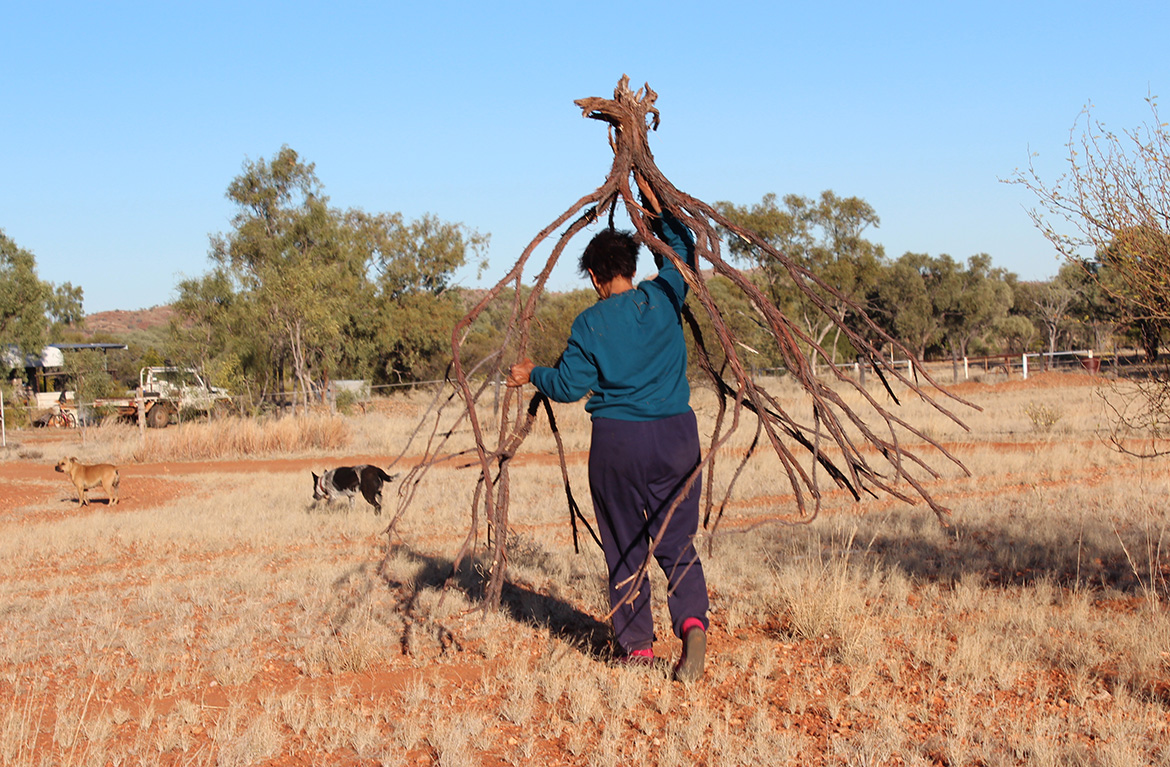
Diane Moon | Could you explain your approach in covering the outer surface of Wingreeguu with circles?
Shirley Macnamara | I wasn’t too sure how I was going to use the strands, but I’ve often used rings in my work and with the little strands running down, so I thought this would be the best way for me to do it. Those little rings and strings have always been representative of tracks or storylines and the connecting link between us, as well as a link to where we are and who we are and where we come from. Quite a strong belief in my life is the idea that though we go around and around in circles, you always go back to where you came from, to the place where you expect to live and die.
Diane Moon | Tell us something about the yellow ochre because I know that’s very important to you.
Shirley Macnamara | Well I have a strong connecting link with the yellow ochre and it is very special. I’ve used it in my other works as well. The yellow ochre comes from a very special place and has a very special meaning. It needs to be cared for and is also a nurturing essence that belongs to us and I believe it carries the essence of where we belong.
Diane Moon | And not surprisingly, in all these years, nobody else has taken up weaving with spinifex have they?
Shirley Macnamara | After two and a half weeks my hands recovered. I wear one glove that becomes black from the spinifex wax, a beautiful resin that comes out of the spinifex used traditionally as an adhesive for gluing stone tools onto their shafts. It goes black when you’re picking spinifex and sticks to your hands.
You heat it up to soften and mould it to use. I have a safety pin on my shirt which I use every now and then to dig a piece of spinifex out. It has some really good things about it as well.
Diane Moon | Would you could call it a love-hate relationship?
Shirley Macnamara | It’s about bringing a part of that bit of bush where both those plants grow to the Gallery. It’s also about making use of what we have in our area and looking after our environment (ours is quite a harsh one). And to be able to be creative, making something from what’s there and sharing that with everyone else.
Diane Moon is Curator, Indigenous Fibre Art, QAGOMA
On 10 December 2012, during the opening weekend of ‘The 7th Asia Pacific Triennial of Contemporary Art’ (APT7), Shirley Macnamara spoke to a small group eager to hear about her life and work.
Buy the publication
Shirley Macnamara: Dyinala, Nganinya is the first monograph on the artist and showcases 20 years of her practice, including all major works held in public and private collections. Stunning studio photography presents the beauty and diversity of her sculptures for the first time, and scholarly contributions from Diane Moon (exhibition curator), Julie Ewington and Paul Memmott reflect on the observations of nature that underpin Macnamara’s practice, as well as on her cultural background. Available from the QAGOMA Store and online.
Join us at QAG
‘Shirley Macnamara: Dyinala, Nganinya’ is at the Queensland Art Gallery (QAG) from 21 September 2019 – 1 March 2020. The exhibition highlights Macnamara’s unique sculptural pieces crafted from the spinifex plant and its runner roots.
APT7: Shirley Macnamara In Conversation
Subscribe to QAGOMA YouTube to go behind-the-scenes / Watch video on Indigenous Australian Art / Read more about the Indigenous Australian Collection
Feature image detail: Shirley Macnamara Wingreeguu 2012
Acknowledgment of Country
The Queensland Art Gallery | Gallery of Modern Art (QAGOMA) acknowledges the traditional custodians of the land upon which the Gallery stands in Brisbane. We pay respect to Aboriginal and Torres Strait Islander elders past and present and, in the spirit of reconciliation, acknowledge the immense creative contribution Indigenous people make to the art and culture of this country. It is customary in many Indigenous communities not to mention the name or reproduce photographs of the deceased. All such mentions and photographs are with permission, however, care and discretion should be exercised.
#ShirleyMacnamara #QAGOMA
